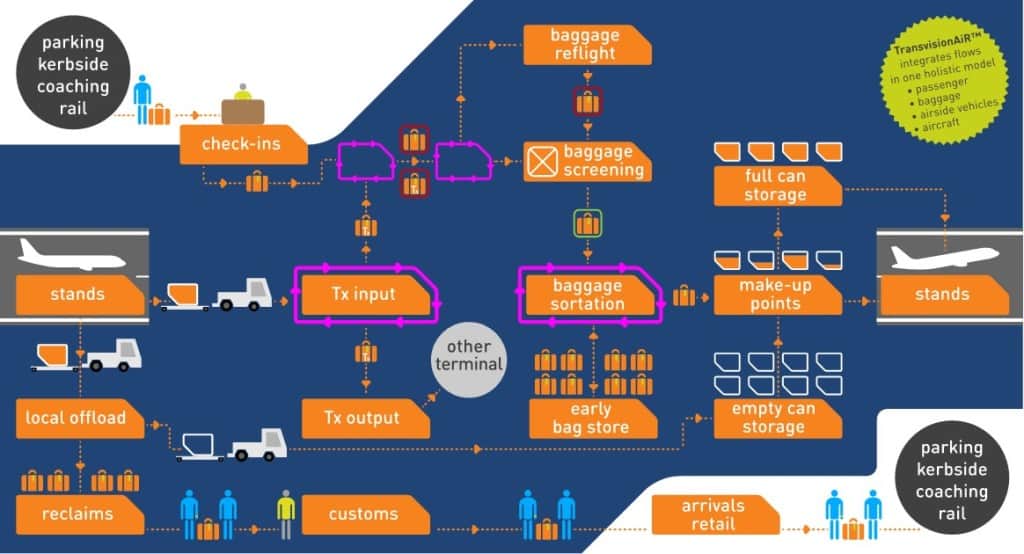When you are excited about your holiday or contemplating that important business meeting overseas, you don’t pay much attention to what happens to your bag when you drop it off at check-in. It’s only if something goes wrong that you contemplate the complicated Baggage Handling System (BHS) that goes on behind the scenes.
Of course, this is very much a passenger’s point of view. For those of us working in and around airports, we know the complexity surrounding this process and how important it is for baggage handling systems to work together with the rest of the departures structure to ensure the smooth operations of the entire airport. But do you know enough about the process? Do you know the recent developments in BHS that have allowed faster, more automated and personalised technologies that make operations more efficient? Follow us on the journey of a passenger bag…
So, what does happen once a passenger drops off their bag at check-in?
The infographic from our recent white paper, New Ways of Thinking follows this process.

Dropping off a bag
Once passengers arrive at an airport, they proceed to airport check-in or bag drop off areas. There are multiple types of check-ins and ways of dropping of your bag:
Full-Service airline-specific Check-in Counters (manned) – traditional check-in desks
Full-Service Common Check-in – enabling passengers to check-in at one place and potentially at any time.
Check-in Kiosks (self-service) – passengers can check-in without the need for ground staff.
Self Service Bag Tag Kiosks & Bag Drops (self-service) – Once checked in, either online, via mobile or self-service kiosk, passengers can tag their bags at a self-service kiosk and can then place the bag into common bag drops.
Bag Drop Counters (Manned) – if an airline does not allow its passengers to print bag tags at self-service check-in kiosks, manned bag drop counters are then provided where bags can be tagged and dropped.
What happens next?
Bags are conveyed to hold baggage security screening machines, following which they may be sorted according to whether they are early, on-time or missed:
Early bags can be directed to an Early Bag Store (EBS); a facility that is crucial at a hub airport for managing transfer bags, but will be increasingly important for regional and low-cost airports if common and anytime check-ins are adopted.
On-time bags are conveyed to dedicated Makeup Points
Late or late transfer bags that did not make their flight in time are re-flighted onto the next available flight. This then makes the bag then either on time or early. Early bags can then stored in EBS, therefore sufficient EBS capacity is very important in managing demand.
Makeup Points (MUPs)
On-time bags travel to a MUP, the area where bags are assembled prior to loading the aircraft. From here, bags are loaded to Unit Load Devices (ULD) or carts, depending on what the aircraft is designed to carry. Carts or containers are then driven to aircraft from the baggage hall on tugs.
After transferal to the aircraft, the airport’s job is done – the bag is now ready to depart, alongside its owner, to its destination.
If you want to find out more about Early Bag Stores, Baggage Handling Systems and other innovative methods of improving the baggage process, download our white paper, New Ways of Thinking

